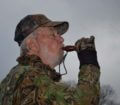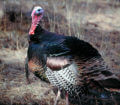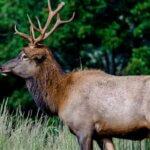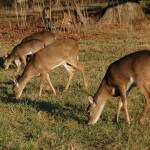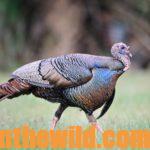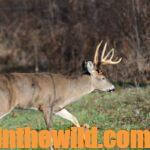Editor’s Note: Many years ago, I met a man named John Demp Grace, when I was turkey hunting at Bent Creek Lodge www.bentcreeklodge.com in Jachin, Alabama. Grace had built a turkey blind, and he was the first person I ever had met at that time who was taking turkeys with a bow. The evolution of that hunting blind and the skills required to harvest wild turkeys with a bow were passed down to his son, Steve Grace, who’s obsessed with taking turkeys with a bow and arrow. Fifty-year-old Steve Grace from Pennington, Alabama, has been turkey hunting for 35 years and has taken 250 wild turkeys with his bow – mainly on public lands.
 If I hear a turkey gobble and decide to go to him either to the left or right, I keep moving to the side of the turkey and get on the other side of the other hunter who is calling to that same turkey. This happens very rarely on the public lands I hunt. Most of the time, I can outmaneuver the other hunter and get the turkey to come to me, because that other caller already has called too much and has kept the turkey from coming in to him. Once I get around that hunter and start calling myself to that turkey using fewer and more-subtle calls, and I’m closer to that gobbler than the first hunter, then I can take the gobbler.
If I hear a turkey gobble and decide to go to him either to the left or right, I keep moving to the side of the turkey and get on the other side of the other hunter who is calling to that same turkey. This happens very rarely on the public lands I hunt. Most of the time, I can outmaneuver the other hunter and get the turkey to come to me, because that other caller already has called too much and has kept the turkey from coming in to him. Once I get around that hunter and start calling myself to that turkey using fewer and more-subtle calls, and I’m closer to that gobbler than the first hunter, then I can take the gobbler.
I know a lot of hunters say, “When you try to move in on a bird that you know another hunter is calling to, you run the risk of being shot by that other hunter.” Remember, I’ll be moving and not calling, and I’ll be going around that other hunter to try to get in closer to the turkey and farther away from the hunter, before I start calling. So, I’ve never had a problem with having another hunter possibly mistake me for a turkey. Remember deer, squirrels, coons, possums and armadillos also can sound like turkeys. I don’t think I’ve ever seen a hunter shoot one of those critters and mistake them for a turkey.
 Remember, I’m hunting with a bow. When you hunt with a bow and a blind, two things have to happen. You:
Remember, I’m hunting with a bow. When you hunt with a bow and a blind, two things have to happen. You:
* must get close enough to the turkey, so your calling is effective in bringing him in to where you are;
* have to set-up your blind, so the turkey can’t see or hear you setting that blind up.
When I move on a turkey, I always try to find a place I can set-up, so the turkey can’t hear me or see me when I set-up my blind and put-out my decoys. If I spot a turkey out in a field; most of the time, I’ll crawl to a point where I can set-up my blind without the turkey seeing me. When the turkey has his back turned to me, I’ll set-out my decoys, crawl back into the blind and then get set-up to take a bow shot at that turkey when he arrives.
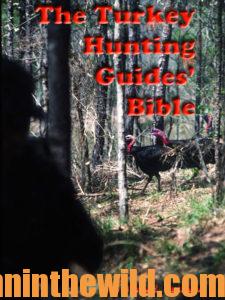 To learn more about turkey hunting, check out John E. Phillips’s books, “PhD Gobblers,” available in Kindle and print at http://amzn.to/XYTKnW, and “The Turkey Hunting Guides’ Bible,” available in Kindle and print at https://www.amazon.com/Turkey-Hunting-Guides-Bible-ebook/dp/B01ITWYY2K.
To learn more about turkey hunting, check out John E. Phillips’s books, “PhD Gobblers,” available in Kindle and print at http://amzn.to/XYTKnW, and “The Turkey Hunting Guides’ Bible,” available in Kindle and print at https://www.amazon.com/Turkey-Hunting-Guides-Bible-ebook/dp/B01ITWYY2K.

